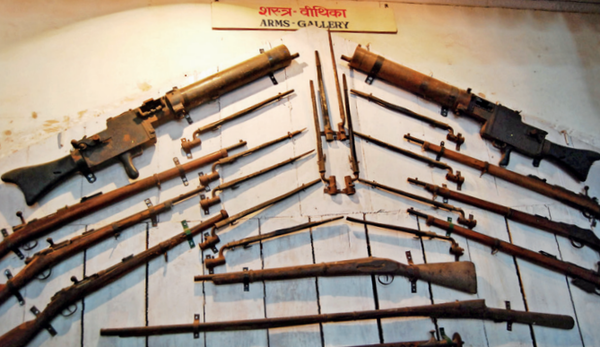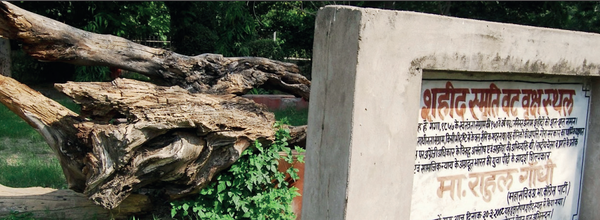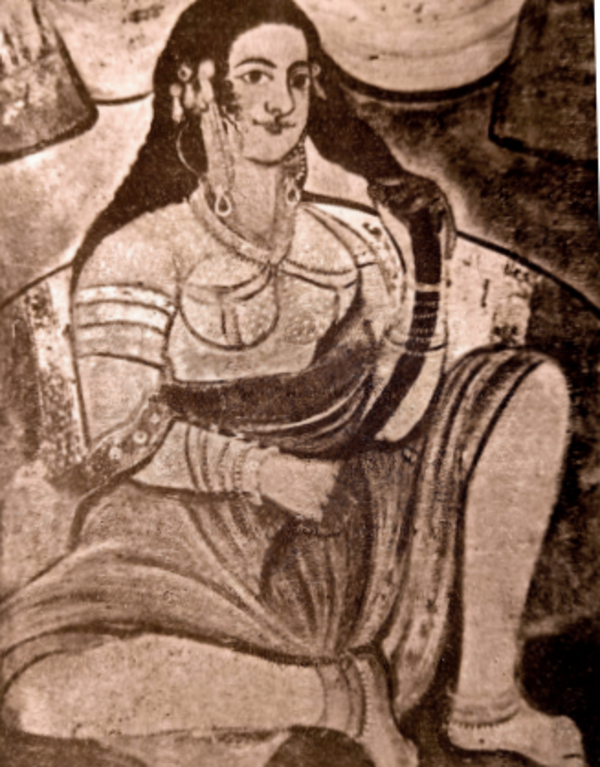“MAKE ONE LAND IN ONE PLACE”
When Mastani opened her eyes, she found herself on a luxurious velvet bed, surrounded by several women and an English doctor giving her first aid. Responding to her question about her injury, Mastani said: “I was on an evening walk with my father in Belusarai. He caught the British exploiting runaway farmers of Kanpur. As an officer of the king, he took charge of the peasants. The British didn’t like it. They chased him and killed him. I was injured and fell into the river. “

Weapons Gallery
Umrao Jaan asked the ‘shureifa’ (noble woman) if she would like to approach the Nawab according to the prevailing customs. Claiming that “fate takes us to one place”, Mastani refused. The answer paved the way for her guardianship under the greatest courtesans of the day. By 1857, various power centers in North India had united against the “outsiders” and a revolution was imminent. The same year, Umrao christened Mastani as Azeezan.
The story of Ameeran and Azeezan’s intertwined lives comes from a book called “Kissa Azeezan Ka”. Published by Rani Prakashan, Allahabad and Samvet Prakashan, Gorakhpur, the 40-odd page book was in prose. Amresh Mishra, author of “War of Civilisations: India AD 1857” has included an English translation of the chapbook in the third chapter of the first volume of the book. However, those who trace the history of Azeezan have different points of view. “More than one account of Azeezan’s early life is known… While there is little to corroborate these stories, his association with Umrao Jaan Ada of Lucknow can be proven to some extent through official police investigations and prosecutions that followed the mutiny. But there is no doubt about the existence and role of Azeezan in the history of 1857,” says Anoop Shukla of Kanpur Itihas Samiti, a non-profit organization engaged in the preservation of Kanpur history since 1946.

Famous banyan tree where 144 Indians were hanged during the 1857 uprising
LOYALTY TO FREEDOM OF INDIA
Among the six invited to Azeezan’s debut performance at the Satrangi Mahal was Kanpur-based jeweler and banker Lala Kalloo Mull Khatri. Making an elegant voice, Azeezan said, “Sin bees ka… tewar chhuri se… ahad jaan ne alam Wajid AliShah mein utari hai ek marukh Azeezan Bai” (At twenty, dagger drawn… in the time of Nawab Wajid Ali Shah emerges the enchantress Azeezan Bai). An early riser in the evening, Lala was struck by her beauty wondering if it applied to her personality or her attitude. In subsequent meetings, Lala Kalloo Mull offered to finance Azeezan’s venture of an independent Kotha in Kanpur who approached Ladkee Mahal.
But Azeezan grew up with allegiance to the cause of freedom from British rule. He attended public gatherings organized by freedom fighters. Azeezan’s chance encounter with Nana Saheb Peshwa, who was leading the campaign in the region, the occasion would strengthen the cause. However, she joined the cause with the help of Shams-ud-Din Khan, her sepoy spy and lover. You have created a team of brave women. According to some references, the team was called ‘Mastani Sena’. Party members wore men’s clothes and rode horses with swords in hand, making people talk about the national war. They also cared for the wounded sepoys and cared for their comforts. They distributed milk, fruit and sweets among the sepoys.

A portrait of Azeezan Bai
‘ DEMOISELLE THEROIGNE OF THE REVOLT’
One such proof of Azeezan’s audacious devilry was documented by Nanak Chand, a local businessman of those times, who warned the Kanpur debt collector that Nana Sahab had hatched a scheme against the Company. Author Anand Swarup Mishra, who compiled the incidents of 1857 on his centenary in the Nana Saheb Peshwa and freedom struggle, noted: “In his diary (June 19, 1857), Nanak Chand praised Azeezan’s courage saying who was always armed and present at the batteries to help the sepoys. She was very attached to them and Azimullah Khan was particularly in love with her. ” In his article, the British author Sir George Trevelyan (second baronet and nephew of Lord Macaulay) says: “On Sunday June 7th (1857), a proclamation was issued in two languages abjuring all true Hindus and Muslims from uniting in the defense of their religion and to rally around the Nana. The call was heard by all. Azeezan, the Demoiselle Theroigne of the uprising (named after Anne-Josèphe Théroigne de Méricourt – the Belgian singer, orator and organizer of the French Revolution) appeared on horseback, dressed in the uniform of her favorite regiment, armed with pistols and decorated with medals. “
To the colonel Williams‘ inquiry (which followed), local trader Jankee Prasad informed that on the day the flag was hoisted, she was on horseback in men’s clothing, armed with a pair of pistols, and joined the crusade. References say that Azeezan was arrested during the recapture of Kanpur and presented before General Havelock.
The British officer could not believe that such a beautiful woman could have the manly qualities she possessed. He suggested that if she showed repentance, her life might be spared. But he declined the offer. When she was asked what she wanted, she said: “I want the destruction of the British. She was ordered to be shot and killed. When the bullets entered her body, she cried out, “Nana Saheb ki jai” (Hail Nana Saheb).
